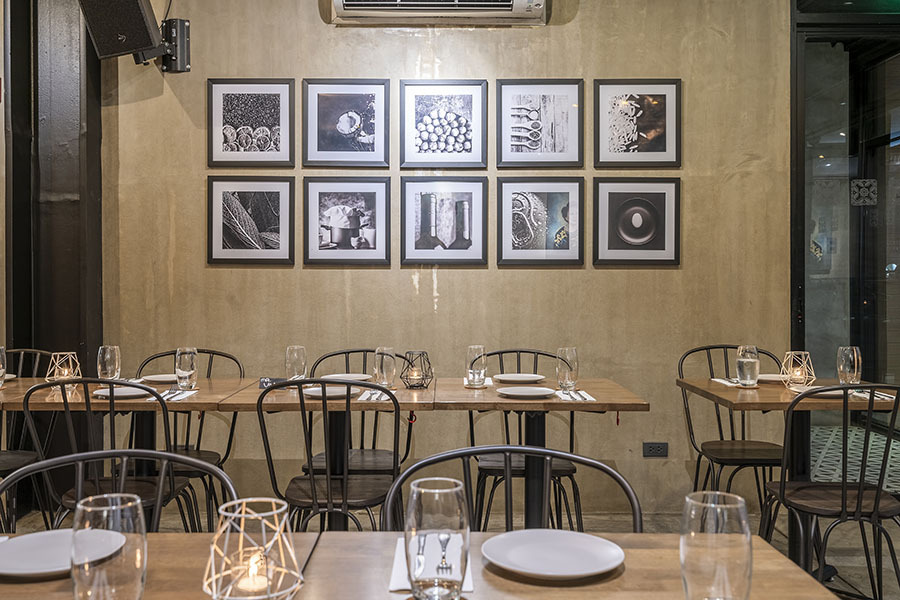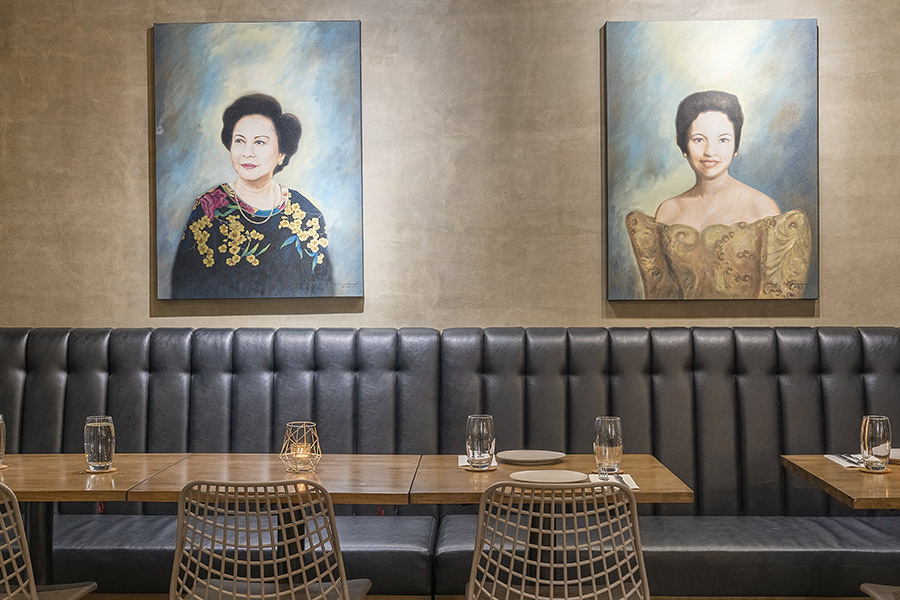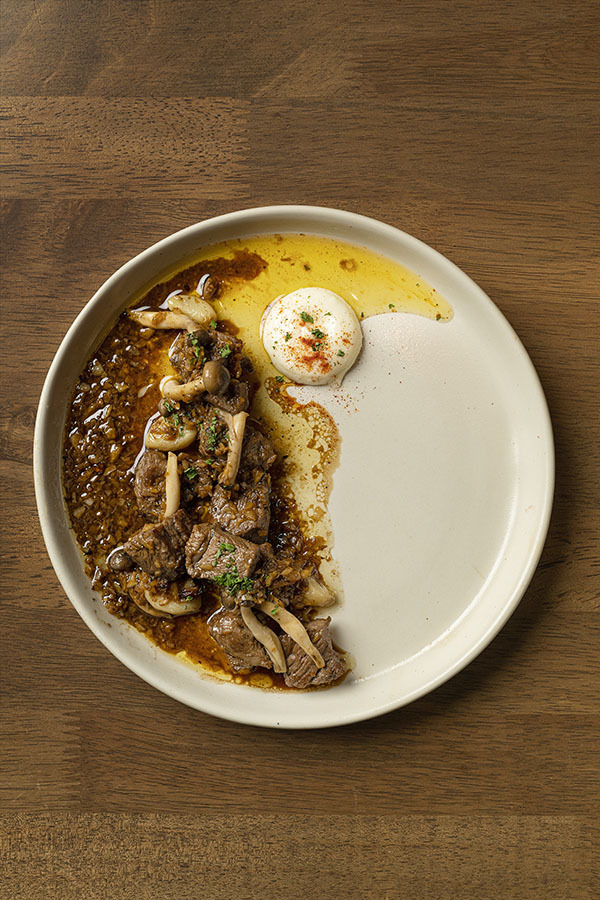Every person will always have a fond memory related to food because smell and taste are quite effective at storing memories. This, we believe, makes Mijo Comfort Food’s story distinct.
Mijo comes from mi hijo, which is Spanish for “my son,” and a fitting name for this newly opened restaurant located on the second floor of a three-story building in Poblacion. “This is my grandma on my dad’s side, Lola Nena, and my mom’s side, Mama Lita,” chef Enrique Moreno says as he points to the two paintings on the wall. His dishes, and essentially his new venture, are tributes to his grandparents who he said would tirelessly prepare Sunday lunches for the family when he was growing up.


A quick glance at the menu will already give you a feel of his family descent. The starters like the flavorful aligue gambas and the juicy salpicao with pickled mushrooms are from his Spanish side of the family, and are best enjoyed when you scoop up the garlic-laden sauce with their bonete bread. While the porkitos, or his version of a pork bun, made with roast pork, crispy wonton, and hoisin sauce on a steamed brioche comes from the Chinese side. Moreno’s two renditions of the oyster, one of which is served with lato (sea grapes), show the Filipino side. This theme continues on for the rest of the dishes to be served.

The noodle dishes lend a sense of familiarity like the roasted crab noodle, which is reminiscent of garlic noodles but this time served with heaps of crab meat and served with noodles made in-house—fresh rye spaghettini that’s treated like a pancit, deep-fried then mixed with the sauce. The truffle jamon with small tweaks—the crisp jamon and the rye noodle’s texture and bite very much akin to al dente pasta—makes all the difference.
“Lutong bahay is great, but when you present it in a restaurant, it needs to have that added value and that special touch,” says Moreno. Because of that he does not shy away when it comes to flavors and richness. Take the gindara (black cod), for example. It’s a rich and fatty fish that Moreno serves with a creamy lemon risotto and pickles for a more balanced flavor. The lamb rack paella meanwhile is inspired by his family’s love for both paella and lamb, which are usually served separately as well as his fascination for Moroccan flavors. It’s a combination you wouldn’t likely see in a paella, but somehow it works—lamb racks served with lamb sausage and seasoned with chermoula, a marinade or relish traditionally used in Moroccan, Libyan, and Tunisian cooking.
“I’m surprised and very happy, that people actually share their food. So, we kind of plate things [bigger] to encourage the sharing,” Moreno says. The flavors, too, encourage sharing most especially when dining with a group and that’s something the restaurant welcomes as it gives ode to the famous Sunday lunches Moreno’s family would have.
The dessert are just as memorable and again, quite nostalgic. The bread pudding uses their own bonete bread and draws inspiration from the family recipe. The Manuka honeycomb on top is a nod to his favorite chocolate bar, the Violet Crumble, while the scoop of mantecado ice cream is also a childhood favorite. “F*ck vanilla,” Moreno laughs, “don’t waste your time.”
The calamansi tart is a staple as the acidity cuts through all the rich food you just ate, allowing you to cleanse your palette in time for drinks. Moreno’s personal touch for the classic tart is the crust which he said was inspired by cheesecake, another one from his core memories of food.
Comfort food in the context of Mijo means flavors you love, that are familiar and familial as opposed to comfort food in the form of greasy fast food at the height of a hangover. Both good, both fitting to certain occasions yet also very distinct.
Get more stories like this by subscribing to our weekly newsletter here.
Read more:
Get to know the fun side of Spanish cuisine at Hola Bombòn
This Spanish restaurant’s version of beef katsu has jamón ibérico and blue cheese inside
Margarita Forés’ new Spanish resto gives dining in a new meaning

